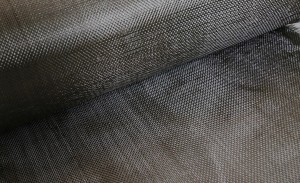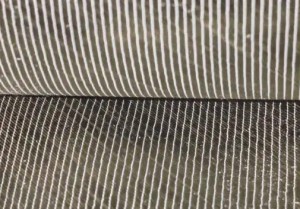History of basalt fiber production process
From 1959 to 1961, the first continuous basalt fiber (CBF) sample was born in the Ukrainian Academy of Sciences of the former Soviet Union. In 1963, a sample with satisfactory quality was obtained on a laboratory device. However, it was not until 1985 that the production plants with a production capacity of 350 and 500 t/a were built. It is characterized by the fact that the basalt melting furnace is equipped with two feeding systems and platinum alloy sleeves, which can produce high-quality products, but the energy consumption of the equipment is high and the production efficiency is low. . In 1997, a new generation of process and equipment was designed, which reduced energy consumption and equipment costs, and made the set lightweight.
In 1999, a Japanese automobile manufacturing delegation visited the BF factory in Kyiv and found more heat-resistant materials suitable for Toyokawa car mufflers. A joint venture was established in 2000, and the production capacity was developed to 1200t/a in 2007. In 2006, Ukrainian basalt fiber and composite material technology development company invented a new series of CBF production equipment, which can make its production cost lower than that of E-glass fiber. The current production capacity is 1000 t/a. Currently, 4 companies have adopted this technology. In the same year, the Austrian Asamer CBF Company acquired the CBF production plant in Kyiv, and cooperated with the Vienna University of Technology to improve its production process, and also built a new CBF plant in Austria in 2009. Since then, CBF has entered a rapid development track. At present, there are nearly 20 foreign research and development and production units of BF. The research and development of CBF in my country began in the 1990s, but the real industrialization came after entering the 21st century. In particular, Chengdu Tuoxin Basalt Fiber Industry Co., Ltd. developed low-energy consumption to produce CBF roving And the new fabric production device has added new impetus to the development of CBF technology. In 2005, Zhejiang Shijin Basalt Fiber Co., Ltd. developed the world’s first new technology of producing CBF with an electric furnace, which opened up a way for my country to produce high-performance CBF at low cost and enhanced its international competitiveness. There are about 15 production plants in my country. The total production capacity is about 7,000 t/a, and another one is under construction. By 2012, the total production capacity is expected to reach 20,000-30,000 t/a.
Existing basalt fiber production technology
Basalt ore is a single raw material prepared by nature for you, heated to 1460C, and can be drawn into basalt fiber through the bushing plate, without any other materials, without any chemical reaction, it can be made into high value-added basalt continuous fiber production basalt fiber factory All are designed with Russian and Ukrainian technology: one furnace can supply one platinum alloy drain plate with a daily output of more than 100 kg. Our country is producing basalt fiber factories: Zhejiang Debang, Shanghai Russian Gold, Yingkou Parkson, Sichuan Tuoxin, and Mudanjiang Electric Power all use a furnace to draw 200 holes of platinum alloy bushing plate. The quality of the product is good, and it can pull 7um, 9um, 11um, 13um-17um basalt fiber, while foreign countries can only pull 13um-17um basalt fiber. Therefore, the production level of basalt fiber in my country is leading the world, but there are problems of low output and high energy consumption.
Technological innovation of basalt fiber production
1. Reduce energy consumption
The existing production technology of basalt fiber is to heat the ore with electricity, natural gas, and gas. Most enterprises use electricity as the only energy source. The production of one ton of basalt fiber consumes about 10,000 degrees of electricity, which can be called a high energy consumption product. The use of relatively cheap natural gas, coal gas, and heating ore is an effective way to reduce production costs.
Increasing the output of a single furnace is definitely a way to reduce energy. A basalt melting furnace increases from more than 100 kilograms per day to 10 tons of heating and melting per furnace. The output of a 10-ton furnace is equivalent to 80 times the output of the existing technology, and the heat dissipation surface of one furnace can definitely save more than 50% of energy compared with the heat dissipation surface of 70-80 furnaces.
Before entering the furnace, use coal gas or natural gas to heat the ore to above 1200C in the screw feeder, remove the moisture, impurities and crystal water in the ore, and then put it into the furnace, and heat the ore to 1460C2/3 with electricity in the furnace. Natural gas or coal gas is used for energy Preheating, 1/3 electric heating, using cheap natural gas or coal gas not only saves more than 50% of the cost, the flow rate of the melt is large, the diversion and distribution of the melt, the liquid level control are easy to control automatically, and because there are no impurities, there are few bubbles The quality of the drawn wire is good, which improves the product several grades.

2. Increase the volume and flow of basalt melting furnace
The melting furnace in the prior art has a small furnace capacity and stays in the furnace for a long time after being heated to temperature. The reason is that a 200-hole leak plate pulls out too little molten liquid, resulting in waste of energy. It is like steaming steamed buns in a pot for 12 hours. In order to increase the output, it is necessary to increase the flow rate of the molten liquid. Multiple 1600-2000 wire drawing hole drawing bushings must be installed, which can melt 400kg of basalt per hour, and the heated molten liquid is drawn into basalt fiber by a wire drawing machine. A large tank kiln can produce 100,000 tons of glass fiber per year, with a large number of drawing bushes and a large number of holes. The glass fiber industry has rich production experience in pot melting, wavelet furnace melting, and pool kiln melting, which can be used for reference and can be transferred to basalt fiber production.
The bottleneck of basalt fiber production is the drawing bushing, and the output of a 200-hole bushing is 100kg of basalt fiber per day. The output of 1600-hole bushing plate is 800kg. If a melting furnace uses 8 bushing plates, the daily output is 6400kg, which is 64 times the output of the prior art. One basalt heating furnace melting 400kg per hour can replace 64 melting furnaces in the prior art, and its benefits are obvious
Glass fiber bushings with 2,000 holes to 20,000 holes have been widely used and can be used as basalt fibers. Considering the characteristics of the high viscosity of basalt melt and the narrow range of drawing forming degree, the bushing structure is reasonably designed to ensure the temperature uniformity of the bushing area to the maximum extent. Drawing production is stable.
1. Platinum-rhodium alloy brushed bushing
Platinum-rhodium alloy brushed bushings have been widely used in the production of glass fiber and basalt fiber. Increasing the density of leakage holes and increasing the number of leakage holes are the methods to produce wire drawing bushings with large holes. Research the electric heating controller of the bushing with constant temperature control to improve the temperature control accuracy of the bushing
2. Non-metal wire drawing bushing
Platinum alloy wire drawing bushing has the advantages of easy temperature adjustment and small wetting angle, etc. The consumption of Platinum alloy in the wire drawing process increases the production cost of the product, and the service life of Platinum alloy wire drawing bushing is four months. The conditions for selecting non-metallic materials to produce basalt fiber drawing bushings are: the material should be able to withstand high temperature, have high strength and toughness at high temperature, corrosion resistance at high temperature, long service life, small material wetting angle, and more importantly, choose a good heating method To control the temperature fluctuation in the drawing area to be small.
It is one of the feasible solutions to choose metallized ceramics to manufacture basalt fiber wire drawing bushings. Metallized ceramics have a high temperature resistance of 2200C, high strength at high temperatures, good toughness, and corrosion resistance. The service life can reach more than 18 months. Eliminating the wire drawing loss of platinum ming alloy can reduce the production cost of basalt fiber. It is necessary to solve the problem of adhesion of the nozzle caused by the large wetting angle of the metallized ceramics and the heating and constant temperature control of the melt in the wire drawing area.
Post time: Dec-26-2022

